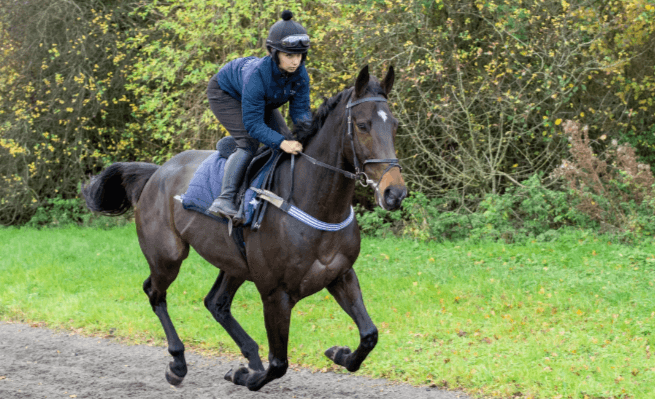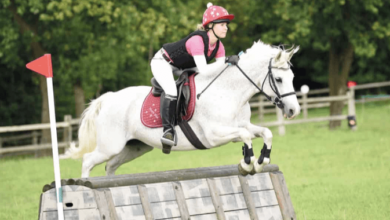How can one train a horse for polocrosse?

Training a horse for polocrosse is a multifaceted process that requires patience, skill, and dedication. Polocrosse, a dynamic team sport that blends elements of polo, lacrosse, and horseback riding, demands agility, speed, and a deep connection between horse and rider. Successfully preparing a horse for this sport involves developing not only physical abilities but also a mindset conducive to teamwork and quick decision-making.
In this guide, we’ll walk through the essential steps to train a horse for polocrosse, offering insights into how to develop a well-rounded, capable horse that can perform in this high-energy sport.
1. Understanding the Requirements of Polocrosse
Before starting any training, it is essential to understand what polocrosse requires from both the rider and the horse. Polocrosse is played on a field where riders must pick up a ball using a racquet and score goals by tossing the ball into a goal. The horses used in polocrosse need to exhibit excellent balance, agility, responsiveness, and stamina. Unlike some equestrian sports that rely primarily on speed or jumping ability, polocrosse requires versatility and athleticism.
The rider must have a high level of control, and the horse must be responsive to subtle cues. This demands thorough groundwork, developing trust, and ensuring the horse is both mentally and physically conditioned for the game’s fast pace and unexpected changes in direction.
2. Choosing the Right Horse for Polocrosse
Not all horses are ideal for polocrosse. Typically, the best polocrosse horses are agile, fast, and have a good temperament. While there are no breed restrictions, horses with a compact build, quick reflexes, and intelligence tend to excel. Common breeds used in polocrosse include Quarter Horses, Thoroughbreds, and Australian Stock Horses.
When choosing a horse for polocrosse:
- Temperament: The horse should be calm, manageable, and able to handle the chaotic nature of the game. An overly anxious or hot-headed horse may struggle in high-pressure situations.
- Athleticism: The horse needs to be quick on its feet with sharp turns and bursts of speed.
- Trainability: Horses that learn quickly and respond well to cues are better suited for the sport. A horse with a cooperative nature will be easier to work with and adapt to the demands of polocrosse.
3. Laying the Foundation: Groundwork and Basic Training
Like any horse training program, preparing a horse for polocrosse starts with solid groundwork. A well-trained horse will understand the fundamentals of pressure and release, leading, stopping, backing up, and yielding to pressure.
Desensitization plays a big role in groundwork for polocrosse horses. They must become accustomed to the sudden noises, movements, and the sight of the racquet and ball being handled during play. This can be done through:
- Sacking out: Introduce various objects, such as the racquet, ropes, or even the ball, to the horse’s environment. Encourage them to remain calm as you move these objects around them.
- Introducing the racquet: Start by rubbing the racquet around the horse’s body, then gradually move to simulating game-like actions, such as tossing the ball or swinging the racquet in close proximity.
Additionally, groundwork should focus on creating a strong bond between the rider and the horse. The horse must trust the rider’s decisions implicitly, as polocrosse games happen fast, and horses don’t have time to question their rider’s commands.
4. Building Agility and Responsiveness
Agility is the key physical trait for a polocrosse horse. This sport demands quick turns, sudden stops, and rapid accelerations. Start by training the horse to respond instantly to the rider’s cues using simple commands like “whoa” to stop or “go” for forward movement.
Exercises to build agility include:
- Circles and serpentines: These help the horse develop flexibility in their body and encourage them to bend around the rider’s leg. Use smaller circles to increase difficulty as the horse progresses.
- Rollbacks: Teach the horse to make sharp turns by stopping suddenly and immediately turning the opposite way. This move is crucial in polocrosse, where the game can change direction in an instant.
- Pole work: Set up poles in different formations (straight lines, zigzags, or as grids) to encourage the horse to think about foot placement, improve their spatial awareness, and build coordination.
- Sprints and stops: Work on sprinting short distances, followed by immediate halts. This helps build the horse’s muscle strength and increases its ability to stop on a dime during a game.
5. Introducing the Ball and Racquet
Once the horse is responsive and comfortable with basic commands and agility drills, it’s time to introduce the polocrosse equipment: the racquet and ball.
Start by carrying the racquet while riding to familiarize the horse with it. Move the racquet around the horse, simulating game-like motions such as swinging or tossing. Gradually incorporate the ball into training sessions by bouncing it near the horse or throwing it from the racquet while riding. The goal is to ensure the horse remains calm and collected as the ball is handled.
6. Developing Speed and Stamina
Polocrosse is a game of speed and endurance. Horses must be able to sustain a fast pace throughout a match, so it’s crucial to focus on conditioning during training. Incorporate interval training by alternating between bursts of galloping and trotting. This builds both speed and stamina while keeping the horse’s energy levels in check.
Cardio exercises for polocrosse horses include:
- Galloping in intervals: Work the horse in short bursts of galloping, followed by walking or trotting to recover. Over time, increase the length of the galloping intervals.
- Long-distance trail riding: Taking the horse on long rides over varied terrain will improve stamina, which is necessary for maintaining endurance throughout a polocrosse match.
7. Fine-tuning Lateral Movements
Lateral movements are critical in polocrosse for positioning the horse correctly on the field and outmaneuvering opponents. Training a horse to perform leg yields, side passes, and shoulder-ins will allow the rider to move efficiently on the field.
Begin with basic lateral movements at a walk, asking the horse to move sideways in response to leg pressure. Gradually increase the speed at which the horse performs these moves. Consistency is key here, as lateral work not only builds muscle but also enhances the horse’s ability to maneuver in tight situations during a game.
8. Developing Mental Toughness and Focus
Beyond physical abilities, polocrosse horses need to be mentally tough and able to focus under pressure. Training for this involves placing the horse in situations where it must remain calm and collected. Riding with other horses, practicing in environments with distractions, and exposing the horse to the fast-paced nature of polocrosse will help desensitize them.
Simulating game-like situations during training sessions is an effective way to build the horse’s mental endurance. Work with teammates to practice ball handling, scoring, and defending, gradually increasing the intensity of the exercises. Over time, the horse will become more adept at handling the stress and unpredictability of a polocrosse match.
9. Training for Teamwork and Communication
Polocrosse is a team sport, so the horse must work well with other horses and riders. Regularly ride in groups to accustom the horse to the presence of other players. Practicing passing the ball, blocking, and defending as a team will help the horse understand its role on the field.
Effective communication between horse and rider is critical in this stage. The rider must ensure that their signals are clear and consistent. Practice in-game scenarios with teammates to reinforce the horse’s understanding of its responsibilities during a match.
10. Building Confidence in the Horse
Confidence is key for a polocrosse horse. A nervous or hesitant horse will struggle with the fast pace and aggressive nature of the game. Building confidence comes with repetition and positive reinforcement.
- Positive reinforcement: Reward the horse with praise and treats when they execute commands or handle game-like situations successfully.
- Gradual exposure: Introduce new challenges slowly. Don’t overwhelm the horse with advanced skills until they’ve mastered the basics.
As confidence builds, so will the horse’s performance on the field.
11. Practice Matches and Final Preparations
Once the horse has a solid foundation in agility, ball handling, and teamwork, it’s time to participate in practice matches. These allow the horse to experience a full polocrosse game environment without the pressure of competition. Start with shorter games, then build up to full-length matches as the horse’s stamina and skills improve.
Conclusion
Training a horse for polocrosse is a challenging yet rewarding process that demands patience, time, and careful planning. By focusing on agility, stamina, ball handling, and mental toughness, you can develop a capable polocrosse horse that excels on the field. Whether you’re a seasoned rider or new to the sport, the key to success lies in building a strong bond with your horse, understanding the game’s demands, and gradually progressing through the stages of training. With the right preparation, your horse will be well-equipped to thrive in the thrilling and fast-paced world of polocrosse.




